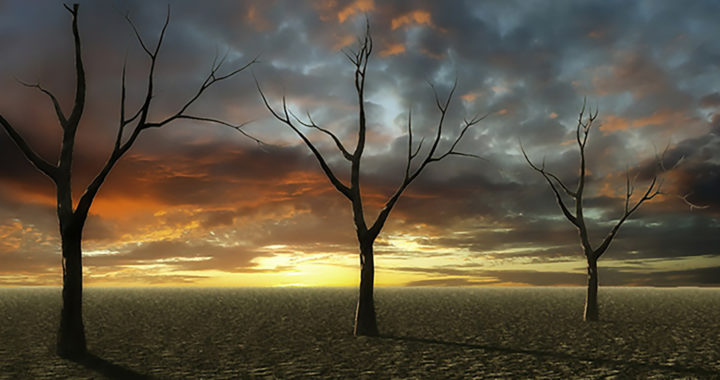The Islamic State has become one of the most notorious militant Islamist groups that occupied a territory in the Middle East that was larger than the United Kingdom at one point in its history and had created a network of terrorist factions across the world.
Note that the group is formally known as the Islamic State of Iraq and Levant or ISIL, as well as the Islamic State of Iraq and Syria or ISIS. The group also calls itself by its Arabic acronym Daesh. Nevertheless, despite its notoriety, it remains isolated from the rest of the world. Most of its leaders are reclusive and the areas it occupies remain inaccessible.
There are some basic albeit critical facts about ISIL that are important to take note of, especially when it comes to discussing its historical origins and similarities with other factions such as Al-Qaeda, as well as the motivations of the group and its leaders.
What Is The Islamic State? When And How It Originated? What Is The Purpose Or Goals And Objectives Of ISIL?
History of ISIL and Al-Qaeda Linkage
Jordanian national Abu Musab al-Zarqawi founded the group in 1999 under the name Jamāʻat al-Tawḥīd wa-al-Jihād or The Organization of Monotheism and Jihad.
In 2004, the group swore allegiance to Osama bin Laden including his al-Qaeda and subsequently changed its name to Tanẓīm Qāʻidat al-Jihād fī Bilād al-Rāfidayn or The Organization of Jihad’s Base in Mesopotamia. Observers from the international political sphere and media called the group al-Qaeda in Iraq. Nonetheless, the group became part of the global militant Islamist organization of bin Laden.
The group rebranded itself in 2006 by merging with other Iraqi insurgent groups. It called itself the Mujahideen Shura Council. Al-Zarqawi died in June 2006 during an operation led by a United States force.
Several mergers with other insurgent factors occurred in 2006. In the same year, the group became the Dawlat al-ʻIraq al-Islāmīyah or the Islamic State of Iraq. Abu Abdullah al-Rashid al-Baghdadi and Abu Ayyub al-Masri became the leaders. During the entire American occupation of Iraq, several top-ranking military officers of Saddam Hussein were imprisoned. The expansive American detention facility was instrumental in recruiting and nurturing these men who would later become key Islamic State personnel.
Another US-led operation in Iraq killed al-Baghdadi and al-Masri in April 2010. Subsequently, Abu Bakr al-Baghdadi became the new leader. Under this new leadership, the group expanded to Syria. By April 8, 2013, the group became the Islamic State of Iraq and Syria or the Islamic State of Iraq and the Levant. In 2014, al-Qaeda completely disowned the group due to its extremism.
Purpose and Objectives of the Islamic State
Central to the purpose of ISIL is to establish an Islamic State or more appropriately, the establishment of the Worldwide Islamic Caliphate. Note that apart from occupations of certain regions in Iraq and Syria, the group has established operations in Libya, the Sinai Peninsula of Egypt, and other areas in North Africa, South Asia, and Southeast Asia.
Religious indoctrination is at the heart of ISIS and its religious ideologies are rooted in Wahhabism or Salafism—a religious movement and derivative of Sunni Islam that originated in Saudi Arabia during the 18th century. Hence, central to the ideologies of ISIL are orthodoxy, conservatism, fundamentalism, and puritanism.
Even during its earlier days in 1999, the group gained notoriety for attacking Shia Islamic mosques and civilians. Both Sunni Islam and Shia Islam have divided the Muslim world and ardent followers have even resorted to violence to promote their chosen brand of Islam. The rise of ISIL in Iraq and Syria also coincided with increased violence directed toward Shia Muslims. The organization deemed these individuals as non-Muslims or infidels.
Nonetheless, for the Islamic State, it intends to subject all Muslims to a Salafi-based Sunni Islam through a Worldwide Islamic Caliphate and by eradicating Shia Muslims or infidels and other religions. Furthermore, through this pronounced commitment to advance Islam, the group would also implement a strict interpretation of Islamic jurisprudence or the Sharia Law while also denouncing any hint of Western ideologies.
A Look Into the Organizational Structure of ISIL
Despite its international status as a terrorist organization, ISIL remains different from Al-Qaeda because of its stringent organizational structure and international positioning.
The caliph, a religious and political leader heads ISIL. The ideal power of the caliph is expansive because he has religious, political, and military authority over all Muslims worldwide. ISIL asserted that its occupation of a certain territory of an established state or country, as well as organizations nulls any existing sociopolitical and legal structures.
A bureaucratic structure also existed within ISIS, especially within the Islamic State and across occupied territories. Under the caliph is a cabinet of advisers. There were also councils for finance, leadership, military, and legal matters among others. The vast territory occupied by ISIL was also divided into several wilayah or provinces. There were also local governors performing executive functions in specified areas.
Without a doubt, ISIL used to be a de facto state. Millions of civilians, mostly in Iraq and Syria, were under its control. While the group spread terror through executions and pillaging of towns, it is important to highlight the fact that like any other established state, the Islamic State maintained several social institutions. These included the economy, education, social services, and public works, including utility maintenance. Furthermore, the organization had a well-oil media capability that used social media to spread ISIL propaganda.
